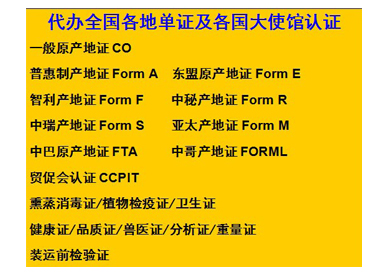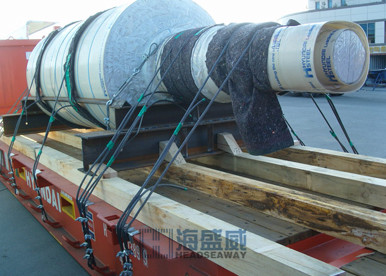How much do you know about the Shipping Company's Certificate?
In China's foreign trade operations, it is common to encounter situations where importers request certification from shipping companies (hereinafter referred to as "shipping certificates") in letters of credit, especially for customers from the Middle East and Africa. Therefore, document practitioners must be familiar with and master this.
Ship certificates are often produced by exporters or shipowners in English, and the detailed content should be subject to the requirements in the letter of credit. All ship certificates must be signed. Usually, it needs to be stamped with the bill of lading seal or official seal of the shipping company.
What is a ship certificate?
Shipping Company's Certificate, also known as "Ship Certificate" or "Ship Company Certificate", is a type of certification document required by the importing party to be provided by the beneficiary, issued by the shipping company or its agent, to explain the vessel's nationality, age, voyage, and other contents.
Function: To provide importers with the ability to meet their government requirements or understand transportation conditions.
Types: mainly include ship registration and voyage certificate, ship age certificate, class certificate, express ship certificate, blacklist certificate, port entry certificate, freight receipt, etc.
content
The main contents of various types of shipping company certificates usually include:
① Date and address of issuance: generally refers to the date and address of issuing the bill of lading;
② Ship name and bill of lading number: indicate the carrying vessel and its bill of lading number for this transportation:
③ Title of proof letter: Provide different types of proof according to the requirements of the letter of credit, often titled "Certificate Of..." or "Statement of...". If the letter of credit does not specify a title, this item can be omitted. If the letter of credit specifies what kind of proof letter it is, it must be accompanied by a title;
④ Title: Generally printed as "TO WHOM IT MAY CONCERN" (to relevant parties);
⑤ Proof content: According to the requirements of the letter of credit, provide corresponding proof based on the actual situation;
⑥ Signature and seal of the issuer: It should be consistent with the signer of the bill of lading, usually the shipping company or its agent carrying the goods, the overseas shipping agency, or the overseas shipping company undertaking intermodal transportation business.
Proof documents of the vessel itself
1. Certificate of Registry The certificate of registry is often combined with the certificate of voyage. The Ship's Nationality Certificate is a certificate used to indicate the nationality of the carrying vessel. Sometimes, due to political reasons, the buyer imposes restrictions on the nationality of the loading vessel, requiring the seller to only load vessels from certain countries or not from certain countries, and requesting the seller to provide corresponding proof.
2. Certificate of Container Vessel. If the importer or bank stipulates in the contract/letter of credit that the product must be loaded onto a container ship and provides corresponding proof, the beneficiary may make it themselves and affix the seal of the relevant issuer, or indicate it on the transportation documents.
3. Confirmation of Class. Some letters of credit require the provision of a Lloyd's classification certificate, such as "Class certificate certifying that the ship is made by a maritime vessel which is classified as 100 A1 issued by Lloyds or equivalent classification society". The Lloyd's classification symbol is LR, marked as 100A1100A, indicating that the ship's hull and mechanical equipment are manufactured according to Lloyd's standards and regulations, and I indicating that the ship's equipment such as anchors, anchor chains, and ropes is in a superior and useful state. We should often be satisfied with such requirements.
Internationally renowned classification societies include Lloyd's, GL, DNV, BV, NK, ABS, and others.
4. Proof of vessel age. Some countries/regions require that the age of ships carrying products must not exceed 15 years, and beneficiaries must request the shipping agent or company to provide a Certificate to Evidence that the ship is not over 15 years old or under 15 years of age. The primary purpose of such requirements is to prevent the use of aging ships and maintain the safety of product transportation.
Transportation and Navigation Certificate
1. The cargo is accompanied by a vessel certificate. As required by the letter of credit: "A certificate from the shipping company or its agent stating that goods are shipped by APL" (meaning that the exporter is required to provide a certificate issued by the shipping company or its agent stating that the goods are loaded onto the President's Steamship Company of the United States).
2. Certificate of Itinerary. It is a certificate used to indicate that a cargo carrying vessel has docked at a port during the voyage. Sometimes, due to political reasons or to avoid the risk of the cargo ship being detained during navigation, the buyer restricts the navigation route and port of call of the loading vessel, requires the vessel to not pass through certain areas or stop at certain ports, and requires the seller to provide corresponding proof.
3. Captain's Receipt. Some letters of credit stipulate that samples or copies of documents should be brought to the importer by the shipowner of the carrying vessel, and a master's receipt should be provided. If entrusted to the shipowner to bring them without obtaining a master's receipt, it will affect the exporter's foreign exchange collection and is often seen in offshore transportation.
4. Certificate of Transshipment. The exporter shall issue a transshipment certificate, stating that the exported products will be transshipped midway and have been contacted. The shipper shall be responsible for informing the consignee of the relevant transshipment matters.
In addition, the vessel certificate also includes a certificate of entry, a receipt for freight payment, port charges documents, a Notice of Readiness for Loading and Unloading (NOR), and specific records of loading and unloading time.
Shipping Organization and Convention Certification
1. Conference Line Certificate. When the letter of credit stipulates that the product must be loaded onto a liner guild vessel, the documents submitted to the bank should include a certificate issued by the shipping company or agent.
Example 1: The letter of credit requires "A certificate issued by the carrier, shipping Co or their agents certifying that shipment has been effective by conference line and/or regular line vessels only covered by institution classification class to comply with the documents.".
Example 2: A certain letter of credit requires "Shipping company's certificate statement that the carrying vessel has entered P&I Club and should be attached with the original documents". It requires the vessel certificate to clearly state that the carrying vessel is a member of the shipowner's insurance and claims association and should be accompanied by the original proof.
2. Proof of blacklist. A typical example is the Certificate of Boycott Israel requested by Arab countries.
It is often stipulated that the vessel carrying the goods is not Israel and will not call on any Israel ports while carrying the goods and that the vessel is not banned entry to the port of the Arab States for any reason under law and the laws and regulations of such Sates allowed.
3. SMC, DOC, and SOLAS. Some people also refer to it as a ship/port security compliance certificate, which is a necessary certificate that a cargo carrying vessel should possess on board in accordance with the International Safety Management Regulations (ISM). According to the regulations of ISM, the China Maritime Safety Administration issues DOC to shipping companies, and ships can obtain SMC. If the shipping companies do not have corresponding certificates, they cannot issue such certificates according to the requirements of the letter of credit.
The general requirement in a letter of credit is: "The carrying vessel should comply with the provisions of the (ISM) Code which requires that such vessel must have on board, copies of the two (SMC and DOC) valid Certificates and copies of such certificate must be presented with the original documents." This can also be reflected as "Certificate issued, signed and stamped by the owner/carrier/master of the carrying vessel hold." "S valid ISM certificate and ISPS (International Shipping and Port Security Safety Code)"; SOLAS refers to the 1974 International Convention for the Safety of Life at Sea (SOLAS Convention). After the 9/11 attacks, the International Maritime Organization held a conference of contracting parties in December 2002 to pass an amendment to the SOLAS Convention, which came into effect on July 1, 2004. According to the relevant regulations above, ships should hold the original "Safety Management Certificate", whose ship name is consistent with the nationality certificate, and the company name on board should be consistent with the company name in the "Certificate of Compliance".
Ranking of similar articles
- 深圳口岸经营服务企业收费公示单
- 巴拿马运河下月将迎来最大集装箱船
- 全球船厂手持订单量大幅下降
- 四大航运巨头组建数字集装箱航运联盟
- 油船市场将成限硫令的大赢家
- 菲律宾港口巨头或将收购韩进苏比克
- 太古轮船完成收购汉堡南美集团散货业务
- 深圳海盛威物流周刊(2019-3-20)
- 全球首艘极地凝析油轮在广州南沙命名
- 出口值122亿元 舟山外贸出口商品货值“老大”易主
Latest news articles
History









